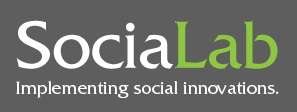Climate change is happening: 2015 was the hottest year in recorded history. Fortunately, more companies are taking action to help save the planet by integrating sustainable approaches into their business models.
“Corporate Social Responsibility (CSR)”, a term that has been around for decades, has been encouraging companies to broaden and deepen their approaches.
So what kind of steps are companies taking with “Codes of Conduct” towards concerted, impactful actions that could significantly reduce their environmental footprint?
At the leading edge are a small but growing number of notable companies adopting “sustainable packaging.” According to the Sustainable Packaging Coalition, you package more sustainably when “all packaging is sourced responsibly, designed to be effective and safe throughout its life cycle, meets market criteria for performance and cost, is made entirely using renewable energy, and once used, is recycled efficiently to provide a valuable resource for subsequent generations.”
This is easier said than done. So many factors come into play when opting for green packaging, with extremely high collaboration throughout the supply chain being key (from designers, to manufacturers, to marketers, to end-users).
One of the challenges faced by designers today is to successfully create packaging while eliminating the excess use of materials. This way, the product-to-packaging ratio will be optimized, leaving no extra materials to go to waste. One success story is in the plastic water bottle industry. We have seen a huge reduction of material use in water bottle manufacturing. Through smart designs, manufacturers were able to cut the PET materials from 15 grams down to 9 grams for each bottle, reducing the total use of PET from 600 million pounds to 400 million pounds per year. Less material waste importantly leads to less energy waste.
Another challenge that arises is in the selection of sustainable packaging for food products: How to select materials that are sustainable, and at the same time protect foods safely throughout their life cycle; recycled materials are usually not as durable as non-recycled ones. And even when we do find materials that can be recycled or reused, we still need to ensure that the production process (especially machines for manufacturing) actually uses less or even renewable energy. Adding to the challenge is that different foods require different types of packaging, and different packaging requires different types of recycling processes.
What’s more, we are still at a stage where we neither have the required technology to recycle certain packaging, nor does the law enforce these manufacturers to align with environmental standards (ex: chips bags made of foil, single-serving foods such as yoghurt, and toothpaste tubes). In the Unites States alone, around 26 billion plastic pouches are thrown into landfills without any regenerative potential. That’s enough to circle our globe 4 times over!
Until those laws come into play, key environmental organizations are making a real impact by raising awareness and educating consumers on how to make a difference, like this brilliant campaign that shows consumers how to make choices that help save the rainforest: Follow the Frog.
Sustainable packaging efforts have overcome initial challenges and have already achieved significant results: reductions in landfill waste diverted 1.5 billion pounds of paper, plastic and other materials between 2005 and 2010 in the US alone. Exemplary brands successfully incorporating sustainable packaging include two of our favorite companies, Thrive and Numi Tea (follow us to learn more, as we interview these companies CEOs).
Many new and exciting sustainable packaging materials are emerging, such as “edible packaging”; we will be sharing more of these latest trends in our efforts to demonstrate ways that companies can go the last mile in being a “green business.”
Which “green business” efforts do you believe are at the “leading edge” of impact? Please share in the comments below.
To learn more about SociaLab’s expertise, click here!
Don’t forgot to follow us on Facebook, Twitter and LinkedIn.

